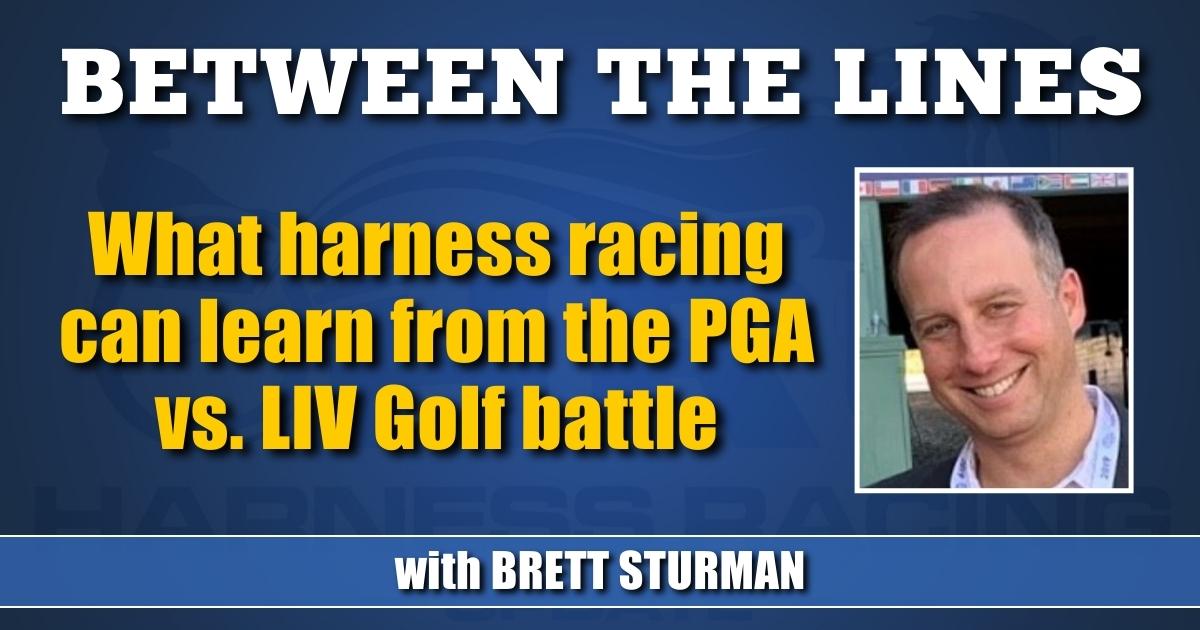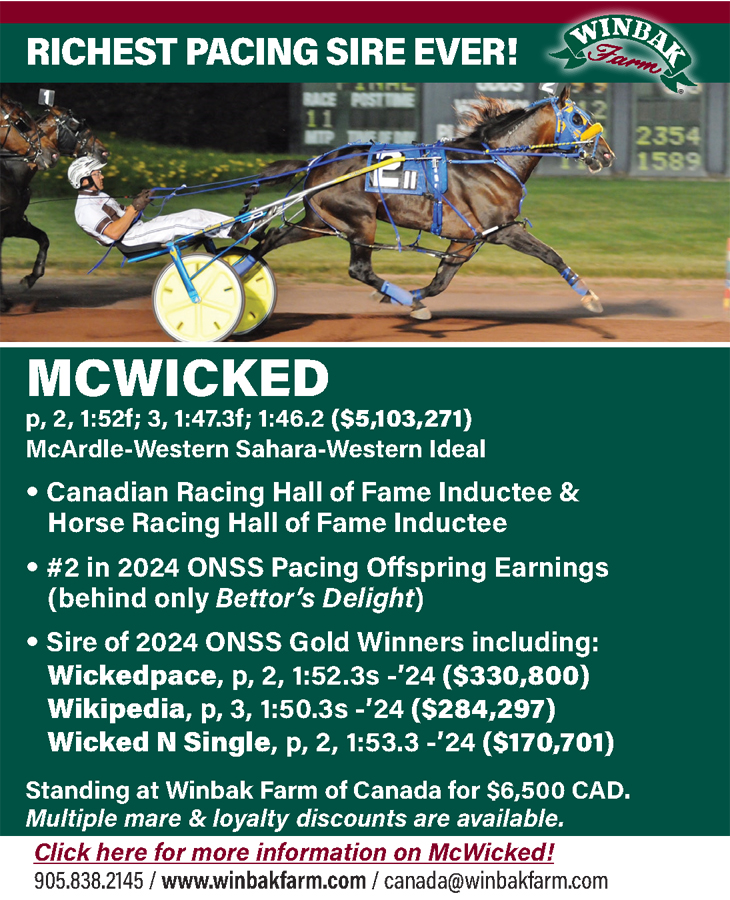
What harness racing can learn from the PGA vs. LIV Golf battle
Similarities abound in a changing racing and golf landscape.
by Brett Sturman
It’s been fascinating throughout this year to watch the emerging battle lines play out in the world of professional golf between the PGA Tour and a new league to rival that tour, LIV Golf. Throughout there have been unmistakable parallels to harness racing.
What makes LIV Golf different from any other golf tour is that it’s funded through non-traditional means. Whereas the PGA and other traditional major tours generate revenue from media rights deals and sponsorships, LIV Golf is funded through a Saudi Arabian investment fund where to this point, the amount of compensation and tournament purses it can offer is both unrivaled and has no correlation to standard revenue generating means.
That dynamic should sound familiar to those in harness racing. Not only from the standpoint of substantial purses offered almost exclusively due to subsidies rather than handle, but the threat that LIV Golf could debatably pose to the PGA Tour rivals that of the Meadowlands in the track’s ongoing battle against more heavily subsidized competition.
Both institutions integral to their industry – the PGA Tour and the Meadowlands – recognize the impact of their product as talent is lured away by competition not beholden to the same economic model. And in formulating a stance like an approach Meadowlands CEO Jeff Gural has led with, the PGA Tour has taken sanctions resulting in bans and expulsions for any of its golfers that play in a LIV Golf tournament.
This week the Meadowlands issued a reminder for the continuing of a weekly driver approval process for the upcoming fall meet. In the process that was initiated towards the start of the year, the idea is that to help the Meadowlands produce the best product possible. Outside of personal downtime in the winter and competing major stakes, the top drivers have been expected to generally race at the Meadowlands over other tracks (such as most notably, Yonkers).
Communicating with Gural through email earlier this week, he reiterated his main reasons behind the approval process. Gural stated that while he feels drivers are entitled to some time off during the winter, he also believes that it’s not asking a lot to drive at the Meadowlands over his competitors, especially with the Meadowlands racing only two days a week.
There’s no doubt Gural believes that having the best driver present boosts his product, the same way that as more golfers defect to LIV Golf, there will come a point where top quality has been diluted.
Interestingly for the Meadowlands, it’s difficult though to say if driving quality has any effect on handle. For example, the amateur driving races which have become a staple on the track’s race cards handle just as well as the races with professional drivers. On the other hand, having the top drivers who are competitive is important to owners and trainers, and overall is obviously preferable in putting together what a high-quality race program should look like.
Gural noted that his acquired ability to have approval rights isn’t solely to mandate that the top drivers show up, but also to ensure races are being run competitively. As Gural has emphasized on multiple prior occasions, he expects drivers to keep holes closed where possible, and to move forward when they pull, no half-in games. Gural also commented that to help with race flow and creating more movement, he is even thinking about allowing betting and a portion of the purse based on who is in front at the half-mile.
The ongoing question then remains: should drivers (or golfers for that matter), ultimately be able to act independently in their own best interests without fear of retribution or exclusion? If someone wants to race against or play against alternate competition with less tradition but for higher compensation, should there be some measure of loyalty against what’s in the best interest of sport? That’s a question in both industries.
Where harness racing and golf deviate is in their respective trajectories. Golf is more popular than ever and certainly due, in part, to legalized sports betting. Golf on the PGA Tour has become one of the more popular sports to wager on, and the display of live odds displayed throughout golf broadcasts is an example of the sport embracing something which was once thought of as taboo. Betting on that sport is ushering in an entirely new demographic. All of which is ironic of course, as it shows the potential for harness racing as a gambling sport at its core.
For its part, the angle coming from new rival LIV Golf is that it’s going to be innovative. It’s ready to evolve as golf evolves. The same can’t be said, unfortunately, for harness racing. Billions of dollars in subsidies have supported the sport for over 15 years now, and how much of that has gone towards innovation?
At times over the years, Gural has led efforts to allocate small percentages from subsidies towards marketing initiatives. Almost always, these attempts were met with resistance. And as Gural noted to me this week, all it takes to end everything is a new governor averse to the public funding of racing or efforts to decouple gaming from racing as was the case in Florida.
Whatever happens in golf between the PGA Tour and its superior-funded new rival, along with all participants, is unlikely to set any precedent that would drive harness racing policy, but the parallels are still close enough that it’s worth paying attention to. It’s a growing sport and there’s much that can be learned from it.













